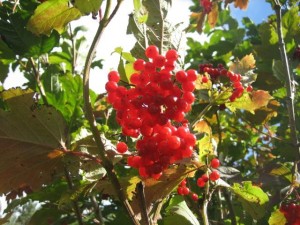Truthberries
 Found in the wild on slopes around the Central Valley, truthberries, or as they are known in the halfling community, welshabaer, have the effect of causing those who eat or drink their juice to remain honest, even under duress. The effect is similar to a zone of truth focused on the consumer of these berries, with a duration of anywhere from 5 minutes to an hour depending on how many berries are consumed.
Found in the wild on slopes around the Central Valley, truthberries, or as they are known in the halfling community, welshabaer, have the effect of causing those who eat or drink their juice to remain honest, even under duress. The effect is similar to a zone of truth focused on the consumer of these berries, with a duration of anywhere from 5 minutes to an hour depending on how many berries are consumed.
Their oily outer skin gives them a texture almost of an olive in its own oil. These berries are seen in a number of forms, since they also work when baked into pies or distilled into wine or schnapps.
Truthberries can be used as the material components in various spells.
Forward thinkers in the Republic of Esrun have also used truthberries to calm warriors about to head into battle or negotiations by coating armor with their oil.
These berries sell for as much as 10gp per pound in regions far from the Central Valley, but since they grow in the wild, nobody has yet thought of trying to package them for markets.
Posted in Magic Item and tagged Central Valley, food and drink, spell component by Stephen Hilderbrand with no comments yet.
Invisible Ink
Introduced to the continent of Farghal by the famed aquatic gnome illusionist and deep sea adventurer Tish Granjeur, invisible ink is used by mages and others to leave messages that can only be seen by those who can detect the invisible.
Invisible ink has also recently been used as a spell component in certain illusory spells having to do with obscuring objects or thoughts. Alchemists have begun to dilute invisible ink for use as a component of invisibility potions. Leather rubbed with this ink during the tanning process tends to be imbued with a hiding property, and cloth with near-invisibility, so this has been seen as a cheap way to make cloaks of near-invisibility. This is truly a multi-purpose solution.
Invisible ink gives off a faint magic glow that is often undetected by detect magic — those affected by detect magic must search for the ink in order to find it, unless it is present in large quantities (such as in a quill of invisible ink or in one of the above items).
Invisible ink is distilled from the ink of invisisquids, transparent creatures of the deep waters of the Emerald Sea. The ink must be extracted from the creatures’ pair of white nidamental glands while they are still living, making the ink relatively hard to come by, especially for those who live on terra firma.
Posted in Magic Item and tagged spell component by Stephen Hilderbrand with no comments yet.
Tinleaf
This metallic leaf grows in magical forests in and around the Phyloctæte. The byproduct of an insane mage’s attempts to develop a metal which could be powered by plants, this flaky substance is often used as a spell component.
In addition, tinleaf is used to build automatons by these very mages. The discovery of tinleaf has made possible the very construction of inanimate constructs which do not require outside magic at all. This worries even the mages of the land.
Tinleaf is particularly potent in magic that deals with time, and artisans occasionally use low grade tinleaf to create self-powered hands on clocks, as well as other uses that follow predefined patterns and schedules, such as self-powered carts.
Posted in Uncategorized and tagged plant, spell component by Stephen Hilderbrand with no comments yet.
Magedust
The invention of Nazur Tscheryn, the original version of this spell component can be added to many spells to extend their duration. It can also have other, stranger, properties when used with certain spells, similar to wild effects. For the most part this has the effect of extending the spell cast as though the caster had used the Extend Spell feat, thereby doubling the duration of the spell cast.
When using magedust, spells take a full round to cast, unless the spell’s casting time is longer than a standard action, in which case the spell’s casting time is unchanged.
The idea of supplementing material components has spread throughout the arcane community, leading to much experimentation. For the original version, mages tend to mix magedust using equal parts saltpeter, magnesium, sulfurous ash, though there are countless variations, some of which have other metamagical effects, such as extending the range and area of effect.
For a gram of magedust, it usually costs 100 gold coins, or 50 gold coins to make it yourself, depending on the individual recipe. The search is on to find cheaper alternatives to bring about the same effects. In all cases, craft alchemy checks can be used to create magedust for half the market prices listed below.
Enough magedust to extend up to a 3rd level spell costs 100 gold to buy. To extend up to a 6th level spell, 250 gold worth of mage dust must be used. And to extend up to a ninth level spell, 500 gold worth of magedust must be used.
Posted in Magic Item and tagged spell component, wondrous item by Adam A. Thompson with no comments yet.